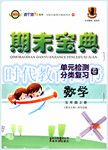题目内容
It is easier to float in the ocean than it is to float in a swimming pool. Do you know why?
Ocean water is full of salt— and salt water can hold up more weigh than fresh water. See for yourself!
You Will Need:
● 3 cups of warm water
● Measuring cup (量杯)
● Wide-mouthed jar
● Salt
● Spoon
● Raw (生的)potato
You Will Do:
1. Pour 1.5 cups of warm water into the jar.
2. Add 1/3 cup of salt.
3. Stir(搅拌) until the salt is completely dissolved.
4. Add another 1.5 cups of water. Pour it slowly over the back of the spoon into the jar so that the two liquid will not mix together.
5. Gently place the potato into the jar. Do not drop it.
What Will Happen:
The potato will sink— but only halfway!
Why?
Salt water is heavier than fresh water, so it will stay on the bottom. The fresh water will remain on top.
The potato is heavier than the fresh water, but it is lighter than the salt water. That is why the potato will sink halfway down
1.In the experiment, what should you do right after you pour the water over the spoon?
- A.Add the salt to the water
- B.Stir the salt into the water
- C.Place the potato in the jar
- D.Pour warm water into thejar
2.In Step 4 of the experiment, why do you pour the water over the spoon “slowly”?
- A.It is easier to see what you are doing
- B.It pushes the fresh water to the bottom
- C.It will keep the water from coming out
- D.It will keep the liquids from mixing together
3.In which step of the experiment do you add the salt?
- A.Step 1
- B.Step 2
- C.Step 3
- D.Step 4
4.What does the underlined word “gently” mean?
- A.Carefully
- B.Quickly
- C.Secretly
- D.Silently
2. D
3. B
4. A
试题分析:本文介绍了一个证明盐水的浮力比淡水的浮力大的实验。
1.C 细节题。根据You Will Do:中的5 Gently place the potato into the jar. Do not drop it说明C正确。
2.D 细节题。根据Add another 1.5 cups of water. Pour it slowly over the back of the spoon into the jar so that the two liquid will not mix together中的so that the two liquid will not mix together指这两种液体不要混在一起。故D正确。
3.B 细节题。根据You Will Do:中的2 Add 1/3 cup of salt.说明B正确。
4.A 推理题。根据Gently place the potato into the jar. Do not drop it中的Do not drop it不要扔下去,说明要轻轻地放,故A正确。
考点:考查科普类实验
点评:本文考查的细节题特多,答题时在文章找到对应的地方,用笔进行标记,这有利于后期有时间检查时可以立刻找到答案的位置。仔细理解作者所讲的意思,再结合选项,通过排除法和自己对全文的把握,选出正确答案。

 一课一练课时达标系列答案
一课一练课时达标系列答案 期末宝典单元检测分类复习卷系列答案
期末宝典单元检测分类复习卷系列答案Mom was right! If you say thank you, for even the smallest gift or slightest show of kindness, you’ll feel happy.
Gratitude, says Robert A. Emmons, a professor or psychology at the University of California, is an important element of happiness. In his recent took, Thanks!, Emmons uses the first major study on gratitude to prove mom’s point. In acknowledging and developing this much-ignored expression of thankfulness, he explains how people have benefited---- even improved their health.
As one of the leading scholars of the positive psychology movement, he admits gratitude may be difficult to express. He advises you to begin by admitting that life is good and full of events and elements that make daily existence a wonder. Second, recognize that the source of life’s goodness is more than just you. That source may be your mom, a friend, partner, child, colleague at work or play, or any combination of these.
Gratitude is always other-directed, notes Emmons. You can be pleased or angry with yourself and feel guilty about doing something wrong, but you can never be grateful to or for yourself.
Expressing gratitude shouldn’t be a reaction; it should be a state of mind. To feel grateful when life is a breeze and you have more than you need is easy. To feel grateful in time of crisis---- anger, hatred and bitterness----is easier. Also, too many people are aware of life’s blessings only after these are lost.
It’s crisis and chaos ---- danger, disease, disability and death ---- that bring many individuals to realize just how dependent they are on others. Yet it’s the way each of us begins life and ends it. It’s too bad that so many people waste those decades in between labouring under the illusion they are self-sufficient, says Emmons.
The abundance of voices expressing gratitude from his studies of individuals with chronic health problems is many. But Emmons goes beyond his “groundbreaking” science to make his case for gratitude by including the inspirational writings of philosophers, novelists and saints, as well as the beliefs of various religions and their respective scriptures. Taken together, these observations are summed up quite nicely by famous humanist Albert Schweitzer, who said the secret of life is “giving thanks for everything.”
To enable and embrace gratitude, Emmons encourages the readers of Thanks! To keep a gratitude diary. He even provides easy-to-follow directions on how to practice and develop gratitude.
I’m not a reader or advocate of self-help books, but I am thankful for the reference I found in a newspaper article to the research Emmons was conducting on gratitude involving organ donors and recipients. The chance discovery led me to this book.
Mom implied that kindness seems to find its way back to the giver because life really is all about giving, receiving and repaying. So I’ll pay attention to her professional advice and say: Thank you, professor Emmons.
【小题1】What is the text mainly discussed?
| A.There are many ways of being thankful. |
| B.Gratitude is important to happiness. |
| C.Mom is great for her being thankful. |
| D.Being thankful will keep you fit. |
A. Professor Emmons supports mom’s study on psychology.
B. mom is as great a psychologist as Professor Emmons.
C. Professor Emmons is a famous psychologist.
D. mom is right about her viewpoint on gratitude.
【小题3】It will be easier for you to feel grateful when ___________.
| A.you live a comfortable life |
| B.you receive gifts on your birthday |
| C.you get help during your hard times |
| D.you are congratulated on your success |
| A.It is enough to thank others orally. |
| B.Whether you are thankful is always up to you. |
| C.Remember to be thankful anytime and anywhere. |
| D.It is easier to be thankful for yourself than for others. |
| A.one-sided | B.reasonable | C.puzzling | D.helpful |
Traffic jam and cities, it seems, go hand in hand. Everyone complains about being stuck in traffic; but, like the weather, no one seems to do anything about it. In particular, traffic engineers, transportation planners, and public officials responsible for transportation systems in large cities are frequently criticized for failing to solve traffic jam.
But is traffic jam a sign of failure? Long queues at restaurants or theater box offices are seen as signs of success. Should transportation systems be viewed any differently? I think we should recognize that traffic jam is an unpreventable by-product of successful cities, and view the “traffic problem” in a different light.
Cities exist because they promote social interactions and economic transactions.
Traffic jam occurs where there are lots of people but limited spaces. Culturally and economically successful cities have the worst traffic problems, while decaying cities don’t have much traffic. New York and Los Angeles are America’s most crowded cities. But if you want access to major brokerage houses (经纪行), you will find them easier to reach in crowded New York than in any other large cities. And if your firm needs access to post-production film editors or satellite-guidance engineers, you will reach them more quickly through the crowded freeways of LA than through less crowded roads elsewhere.
Despite traffic jam, a larger number and wider variety of social interactions and economic transactions can be made perfect in large, crowded cities than elsewhere. Seen in this light, traffic jam is an unfortunate consequence of prosperity, not a cause of economic decline and urban decay.
So while we can consider traffic jam as increasing costs on the areas of big cities, the costs of inaccessibility (交通不便) in uncrowded places are almost certainly greater.
There is no doubt that traffic jam brings the terrible economic and environmental damage in places like Bangkok, Jakarta, and Lagos. But mobility is far higher and traffic jam levels are far lower here in the US, even in our most crowded cities. That’s why, for now, we don’t see people and capital streaming out of San Francisco and Chicago, heading for cities like California, and Illinois.
【小题1】 We can conclude from the first paragraph that_______.
| A.traffic jam and weather are the two factors preventing the development of the big city |
| B.traffic jam seems to be very difficult to deal with |
| C.if traffic engineers try their best, traffic jam can be solved |
| D.public officials are always criticized for misusing their power |
| A.In cities, traffic jam is unavoidable. |
| B.Traffic jam is both a sign of failure and a sign of success. |
| C.Traffic jam is the consequence of successful cities. |
| D.For a successful city, traffic jam is not unpreventable. |
| A.declining | B.developing |
| C.rich and successful | D.strong and healthy |
A. The traffic jam in the two cities has been worsened.
B. New York and Los Angeles are the most successful cities in the USA.
C. It is easier to reach major brokerage houses in the two cities than in other cities.
D. Despite the traffic jam in LA, you’ll find a satellite-guidance engineer more quickly there.
【小题5】What can we learn from the last paragraph? _______
| A.California is as crowded and successful as San Francisco. |
| B.The traffic jam in San Francisco has resulted in the capital becoming empty. |
| C.The traffic jam level in Jakarta is lower than that in the US. |
| D.Traffic jam has caused terrible bad effects in cities such as Bangkok and Lagos. |